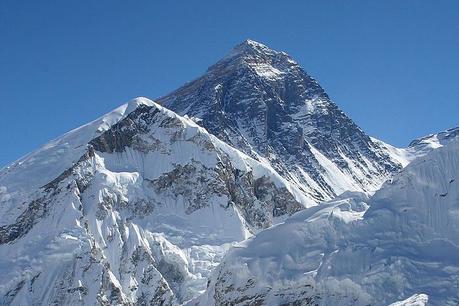In recent years, there have been two persistent stories concerning Mt. Everest that the mainstream press have shared on an an annual basis. The first of those stories is just how crowded the mountain has become, while the other centers on the amount of trash that has accumulated on the Himalayan giant over the years.
While very little is being done to prevent throngs of people from flocking to the world's highest peak each spring, removing trash and human waste from the mountain has become an annual event. This year, those efforts will be led by the Nepali military, which will send a team to scour the peak's loft flanks.

Spring Cleaning in the Himalaya
With the spring climbing season now less than a month from getting underway, teams of climbers from around the world are preparing to descend on Kathmandu. Inside Nepal however, preparations are already well underway, with local logistical teams already heading to Base Camp. After the 2020 season was canceled due to COVID, anticipation for 2021 are understandably running high. The country is looking for a big economic bounce back, even as as unrest and uncertainty grows within its borders.
One of the teams that will be heading to the Himalaya this season is a group of 43 Nepali soldiers, who are tasked with removing as much Everest trash as they can find and carry out. In 2019, 14 sherpas were able to dispose of more than 10,386 kg (22,897 pounds) of waste on their own, so expectations are set quite high for this year.
Much of the garbage that is found on Everest consists of discarded food containers and wrappers, along with discarded gear such as clothing and tents. At higher altitudes there are also a high number of depleted oxygen bottles left behind by previous climbers. The non-perishable items that are recovered are flown by helicopter back to Kathmandu, where the trash is turned over to a recycling plant.

An Unprecedented Clean Up on Five Peaks
While the trash on Everest has become a well-publicized issue, Nepal's most famous mountain isn't the only one that is facing environmental challenges. Since the rise of commercial climbing in the mid-1990s, many of the country's popular climbing peaks have seen a significant influx of visitors. As a result, those mountains became increasingly polluted, creating a poor legacy for the mountaineering community.
Because the impact of all of those expeditions has extended well beyond Everest, the military clean-up unit-assisted by a team of experienced sherpas-will be visiting five other peaks this spring as well. The expanded list of mountains includes Pumori, Ama Dablam, Makalu, Dhaulagiri, and Lhotse. Of those, Makalu, Dhaulagiri, and Lhotse are all a part of the 8000-meter club along with Everest, while Pumori and Ama Dablam are popular training peaks.
The peaks that are a part of this cleaning effort were chosen for several reasons, not the least of which is their location. All six of the mountains that are targeted for clean up can be found a relatively short distance from one another. That makes coordinating the logistics of the operation much easier, while still having the greatest impact possible.
Protecting the Himalaya for Future Generations
While the popular press gets plenty of mileage out of headlines that decry the trash on Everest, those stories often fail to tell the full story. The Nepali government is committed to not just cleaning up the mountains, but preventing them from becoming polluted once again. To that end, it not only sponsors these clean-up efforts-spending more than $850,000 this year alone-but has passed regulations with strict requirements for the climbers and their support teams. Those regulations have helped alter the narrative that surrounds Himalayan climbing, which has gotten more environmentally friendly as a result.
For a number of years now, all expedition teams on Everest have been required to carry out all of the trash and waste that they create while on the mountain. Every mountaineer is also required to pay a $4000 trash deposit before the start of their climb too. That deposit is fully refundable provided the individual collects 17.6 pounds (8 kg) of trash on their own. When you consider that more than a thousand people attempt to climb Everest from the Nepali side of the mountain each year, the amount of trash that is being removed starts to add up.
While there is still plenty of work to be done to reverse the damage left behind from decades of neglect, these efforts have begun to pay off. By most accounts, Everest and its neighbors are in a better place now than they were just a few years ago. With ongoing clean-up campaigns set for the next few years, it is possible that we've turned the corner on this issue and the world's highest peak is now returning to its natural state. That is some good news that we can all appreciate ahead of the 2021 spring climbing season.



